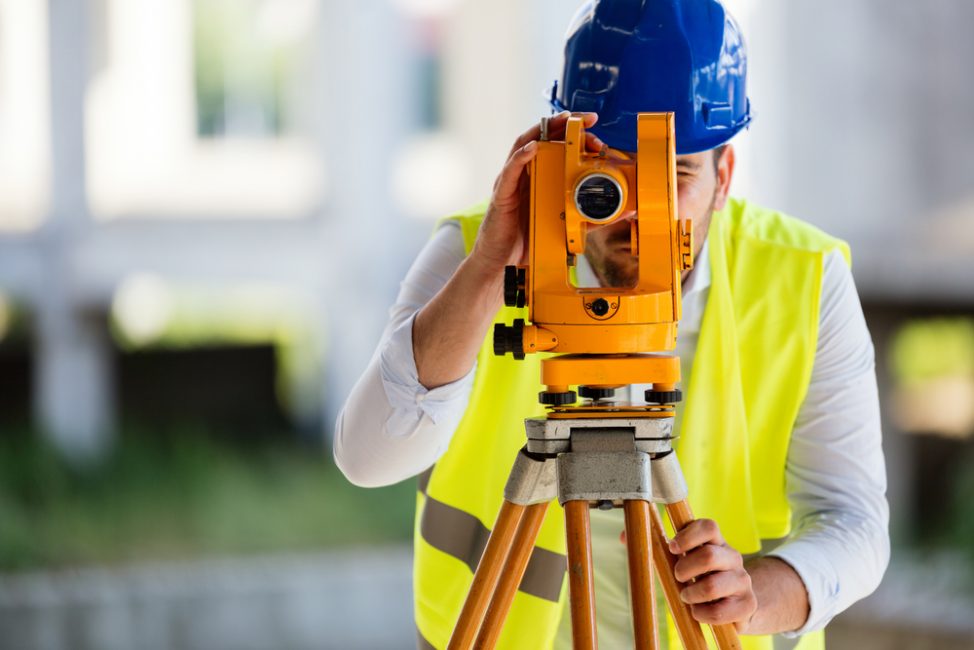It might seem obvious when you first move in where your property lines are. You can see the fence, you can see the garage, you can see the backyard, and so on. But that ain’t necessarily so. And that said, figuring out where your property lines are can help keep your neighborly disputes to a minimum.
What is a property line?
Property lines in real estate are the defined points that mark the edges of your property – where your property ends and your neighbor’s property begins. A property uses boundary lines to determine where to legally place features such as fences, pools, garages, driveways or whatever things you wish to build but also where easements or utilities may exist.
Why do you need to know your property lines?
Being able to locate your property lines accurately makes it much easier to complete a project, make an addition to your house, or move forward with a transaction.
And when you purchase a home, it’s not uncommon for your mortgage lender to require a new survey be conducted on the property. And even if that doesn’t happen, your title insurance company will likely recommend a new survey, so you know your lot size and the size of your property precisely. This is especially important, if for example, your neighbor’s garage reaches over onto your property or if your outdoor kitchen home improvement project encroaches on a buried utility line.
Issues discovered in a new survey of the property may not be covered in your standard owner’s title insurance policy, but knowing those concerns before you close on your new house could help you decide if you need to renegotiate with the seller or walk away from the deal entirely.
How do you find your property line?
- Check your deed – For starters, check your deed. Your property deed contains a legal description of your property’s boundaries. Following that description, you should be able to measure from named landmarks that still exist to determine the location of your boundaries. However, you should know that the description may rely on the location of a landmark that may no longer exist.
If the most recent deed for your property does not contain this sort of description, it will refer you back to an older deed. Keep following the references back, until you find a deed with an actual description of the boundaries. If it’s descriptive enough, it may allow you to walk your property with things as simple as a tape measure to find the boundaries you need to find.
- Check your plat map – If the deed description just doesn’t cut it, no matter what you find, review a plat map of your area. A plat map shows property outlines for an entire neighborhood or area, and they may be very old, depending on how old your neighborhood is. On a standard residential street, you can expect to see rectangles all about the same size lined up on each side of the street, which signify each privately owned property. Every individual property will be labeled with an identifying number, which is the parcel number assigned when the lots were planned for separate sale and follow surrounding parcel numbers in numerical order. Your deed should note the parcel number, but you can typically find the parcel information if you look up your home through your local assessor’s office, many of which have online databases.
- Hire a land surveyor – If you’re still needing closure on what’s going on with your property lines, in most official cases, hiring a professional surveyor is the way to go. Sure you could buy your own metal detector and search out the stakes yourself or wing your addition without the help of the local utility company, but having a land survey done by a professional will get you the precise results you need should there ever be a dispute with your neighbor.
Taking the details from the legal description and plat map, a surveyor carefully measures the legal boundaries of your property. When the survey is completed, metal bars are often buried at the corner points of the property either now, or originally when it first happened. To help you see the corners or boundary lines, a professional surveyor will likely leave wooden stakes or flags in the ground at those spots as a temporary reference for you to follow.
All this being said, a survey isn’t cheap. HomeAdvisor says the typical price range to hire a land surveyor is roughly between $330 and $670 and averages about $500. But the total depends on your property’s history, size, location and more. If your property is larger than normal, a survey could approach $1,000 or more.
Christopher has been been in the Real Estate industry for 8 years and has had the opportunity to close over 1,000 deals while acting as the Managing Broker for thousands more. Christopher is passionate about continuing to find ways to simplify, maximize, and serve Trelora’s clients exceptionally well and spends his time building teams to deliver high levels of service. When not doing real estate Christopher can be seen training for marathons and ultra relays with his 2 year old daughter, eating pizza, and drinking a steady stream of Diet Coke.
